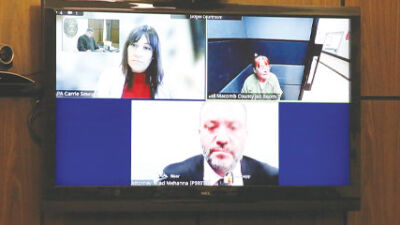MACOMB TOWNSHIP — Projects to make Macomb Township more walkable are underway as $1 million has been allocated to closing gaps between sidewalks.
Several pathway projects are being worked on as part of the township’s Pathway Gap Closure Program.
“The 2024 Pathway Gap Program (to be constructed this year) will focus on gaps in the 25 Mile Road and Garfield Road area as well as along the east side of Hayes Road south of 24 Mile Road,” said Crystal Kozak, township engineer, in an email. “The 2025 Pathway Gap Program (currently in design) will focus on completing gaps along 24 Mile Road between Hayes Road and Garfield Road and Garfield Road north of 24 Mile Road to help facilitate pedestrian traffic in the Lutheran High School North and St. Peters School and Church areas. We are also working on designing a pedestrian bridge along the west side of Card Road over the McBride Drain, just south of 23 Mile Road.”
The program has been around since 2011 and was originally intended to close a small gap along 21 Mile Road near Dakota High School.
“After that, we essentially created a master plan 10-year program for closing gaps,” said James Van Tiflin, township planning director.
Van Tiflin said decisions about which pathways gaps to close are based on local amenities. Gaps near schools take priority, followed by parks and commercial areas before, ultimately, the desire to connect all neighborhoods.
“When a new subdivision is built, there could be a gap between there and the next subdivision down the road or between there and the park,” Van Tiflin said. “Those are mainly across properties that have had houses on them for a very long time. These might date back to before Macomb Township really started to grow; those roads might have been gravel. … Back when those houses were built, there was no requirement for sidewalks.”
Once a gap is selected, it takes about two years for construction to begin.
“This allows time for the design to be completed as well as secure any necessary easements from property owners prior to construction,” Kozak said via email. “Programs typically take one construction season to complete with some potential restoration the following spring.”
While some funding for projects comes from grants, the township funds building sidewalk connections through annual allocations of $1 million from the general fund to cover design, easement and construction. It is a lot of money for laying down concrete, but township officials said it is something residents would like to see done. Closing sidewalk gaps has been a popular item in surveys sent to residents.
“If it’s not the top, it’s one of the top two items that residents request, that the sidewalk gaps be closed so they can walk in the evening for exercise,” Van Tiflin said. “They don’t want to get in the car, but they want to go to the park, or they want to go to the corner to buy something and bring it home and not want to get in a car. It’s something that the township has really tried to focus on. We spend $1 million a year and it’s a lot of money for the township to designate for this, and it’s in addition to all the money the township is spending on roads and parks and other things. We try to balance it out as best we can.”
 Publication select ▼
Publication select ▼




















